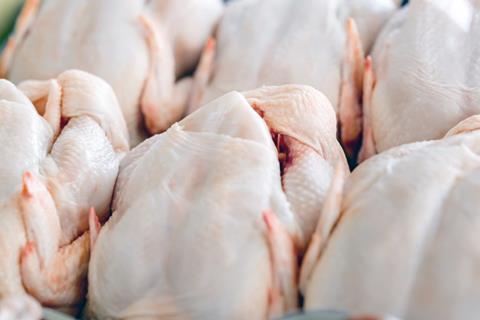Newly published figures from the top nine retailers across the UK have revealed further reduction in the highest level of campylobacter contamination from October to December, in line with the overall trend in previous months.
According to the results, 4.5% of chickens tested positive for the highest level of contamination, which means chickens carrying more than 1,000 colony forming units per gram (cfu/g) of campylobacter, from October to December 2017, down from 5.14% in July-September 2017.

Since 21st September 2017, retailers, including Aldi, Asda, Co-op, Lidl, Marks & Spencer, Morrisons, Sainsbury’s, Tesco and Waitrose, have been required to carry out their own sampling and to publish their results under protocols laid down by the Food Standards Agency.
FSA highlighted that this reduction builds on the first set of results released for the previous period, while also being consisted with previous research that shows a lower level of contamination over the cooler months of the year.
Looking at the average overall percentage levels of campylobacter in the retailers’ data, chickens carrying less than 10cfu/g was up from 44% in July-September 2017 to 52.7% in October-December, while for 10-99cfu/g, the figure was down from 30.5% to 24.3%.
In addition, for 100-1,000cfu/g, percentage levels dropped from 20.3% in July-September 2017 to 18.5% in October-December 2017.
Michael Wight, director of policy and science at FSA, commented: “It’s good to see that levels of campylobacter found continue on a downward trend. We will continue to monitor the results and procedures of the major retailers and encourage them to maintain the significant progress made so far.
“We would like to thank the British Retail Consortium and the retailers for continuing to take the issue of campylobacter seriously and for working together to coordinate the publication of their results. We are actively working across smaller poultry businesses so that they can also contribute to reducing campylobacter levels.”
This story was originally published on a previous version of the Meat Management website and so there may be some missing images and formatting issues.















